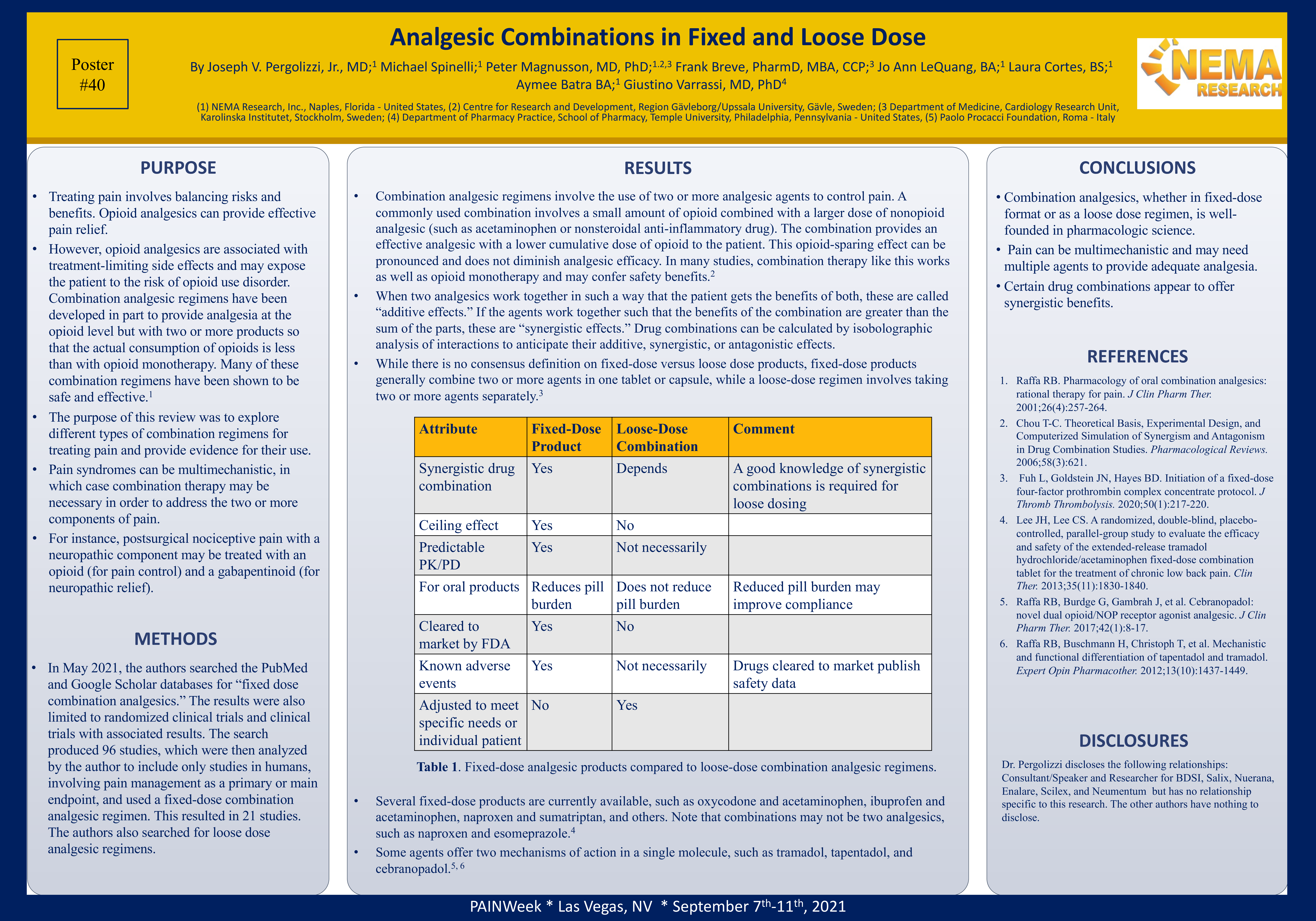Abstract
Treating pain involves balancing risks and benefits. Opioid analgesics can provide effective pain relief. However, opioid analgesics are associated with treatment-limiting side effects and may expose the patient to the risk of opioid use disorder. Combination analgesic regimens have been developed in part to provide analgesia at the opioid level but with two or more products so that the actual consumption of opioids is less than with opioid monotherapy. Many of these combination regimens have been shown to be safe and effective [1]. The purpose of this review was to explore different types of combination regimens for treating pain and provide evidence for their use. Pain syndromes can be multimechanistic, in which case combination therapy may be necessary in order to address the two or more components of pain. For instance, postsurgical nociceptive pain with a neuropathic component may be treated with an opioid (for pain control) and a gabapentinoid (for neuropathic relief).






